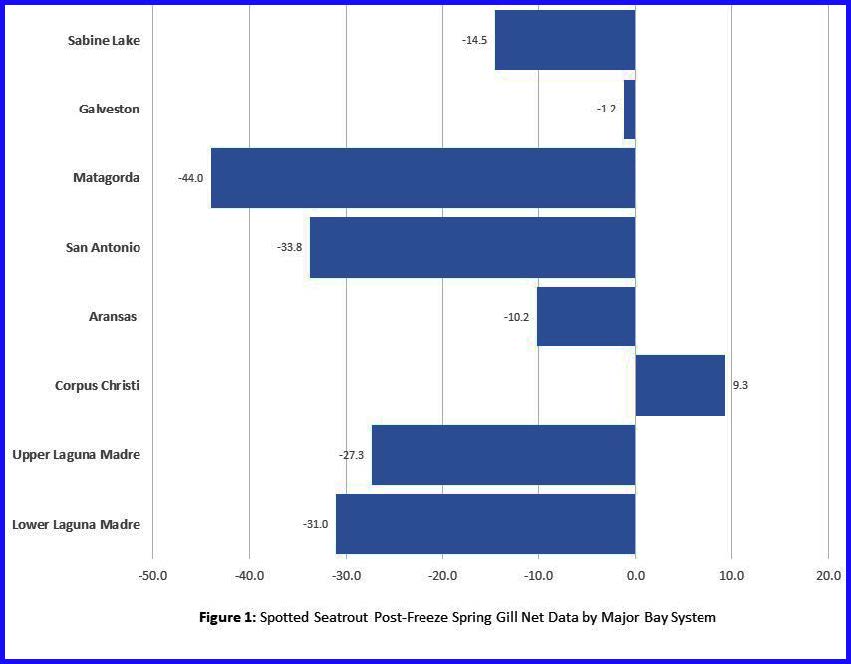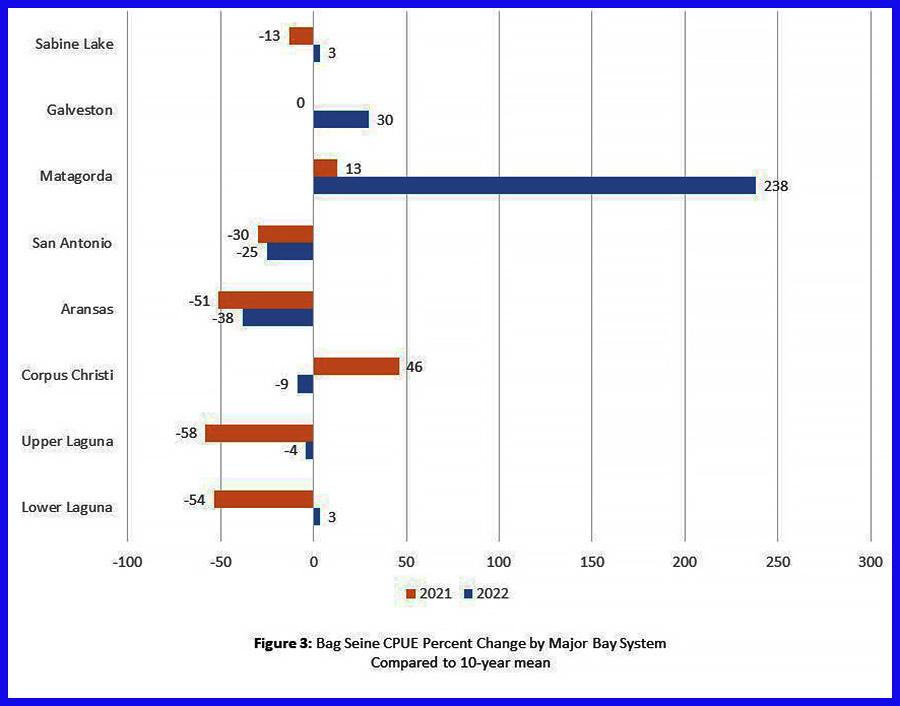
“Dawn Patrol” by Sam Caldwell
By Shane Bonnot, CCA Texas Advocacy Director
Winter weather the week of February 14, 2021, led to fish kill events along the entire Texas coast, serving both as a reminder and an opportunity. It was a reminder that we can only control what we can control, and it continues to serve as an opportunity to shape the future of the Spotted Seatrout fishery in Texas.
What Happened
Texas Parks and Wildlife Commission (TPWC) enacted an emergency ruling, temporarily changing the bag and size limits for Spotted Seatrout in the Upper and Lower Laguna Madre Bay systems. The rule reduced the Spotted Seatrout bag limit to 3 fish and restricted the allowable size to 17-23 inches.
On April 1, 2021, the Texas Parks and Wildlife Commission (TPWC) enacted an emergency ruling, temporarily changing the bag and size limits for Spotted Seatrout in the Upper and Lower Laguna Madre Bay systems. The rule reduced the Spotted Seatrout bag limit to 3 fish and restricted the allowable size to 17-23 inches. Since it was an emergency ruling and wasn’t subject to the normal rule-making process, the changes were effective for only 120 days, with a 1-time extension for another 60 days.
The Resulting Data
In mid-June 2021, the Texas Parks and Wildlife Department – Coastal Fisheries Division (TPWD) biologists completed their routine gill net surveys and began analyzing the data for trends and freeze impacts. That complete data set is available to view here and is summarized in Figure 1 (seen below). The graphs shown in the linked data illustrate the mean catch rate per hour or Catch Per Unit Effort (CPUE) for Spotted Seatrout in a given bay system (i.e. the average number of fish caught in the gill nets per hour) compared to the numerical year.

Figure 1: Spotted Seatrout Post-Freeze Spring Gill Net Data by Major Bay System
In both the Upper and Lower Laguna Madre, gill net data found that the spring 2021 Spotted Seatrout catch rates were both approximately 30 percent lower than the 10-year average. The same data also indicated noteworthy Spotted Seatrout catch rate declines in the Matagorda and San Antonio Bay systems. Those catch rates were approximately 40 percent lower than the 10-year average.
For Aransas, Galveston, and Sabine Lake the data showed catch rates that were at or near the 10-year average catch rates. Corpus Christi, in fact, saw a 10 percent increase in catch rates for 2021. Considering the natural annual variation in populations, the freeze impact to these systems appeared minimal.
Analysis of the spring 2021 data and other anecdotal reports from recreational anglers prompted the TPWC to instruct TPWD staff to publish a proposal to extend the regulations, and at their January 2022 meeting, TPWC passed temporary regulation changes for Spotted Seatrout. Again, the rule reduced the spotted seatrout bag limit to 3 fish and restricted the allowable size to 17-23 inches, with a goal of leaving more spawning fish in the water for two spawning seasons to help the populations recover quickly from the 2021 winter storm. These regulation changes affected all coastal water bodies south of FM 457 in Sargent. Barring emergency action by TPWC, the temporary regulations will expire August 31, 2023, and the fishery will once again be subject to the historic 5-fish bag limit with a 15-inch to 25-inch slot, with 1 fish over 25-inches. CCA Texas was supportive of the temporary regulation changes and testified in favor of having an expiration date so that new data could be analyzed and factored into future regulations developed using the statewide proclamation process.
The intent of the regulation was to help the fishery recover from the freeze and based on previous freeze recoveries (’83 &’89), it takes 2-3 years to get back to pre-freeze abundance (it takes much longer to get back to historic size distribution and age classes). While it is fair to debate whether the trout fishery has recovered, the expiration date was set in statute, therefore outside of an emergency ruling, any future changes will be subject to the rule-making process. Meaning, any additional regulation changes will take time.
How Has the Trout Fishery Responded to the Changes?
According to the spring 2023 TPWD gill net data (Figure 2 – seen below), with exception to the Lower Laguna Madre, bay systems that were either near the 10-year average spring gillnet CPUE following the freeze (in other words, bay systems that weren’t dramatically impacted by the event) or bay systems that received the benefit from the initial emergency ruling (Upper Laguna Madre), appear to be on the path to recovery. The Lower Laguna Madre is trending in the right direction but is still 13.6% below the 10-year mean.

Figure 2: Spring Gillnet CPUE Percent Change by Major Bay System Compared to 10-year Mean
The bay systems that didn’t get the initial protection from the spring 2021 emergency ruling, Matagorda and San Antonio Bay, are still well below the 10-year mean, 32% and 34% respectively. It does appear however that Matagorda Bay could benefit from a substantial number of juveniles coming into the fishery with a 238% increase in CPUE in 2022 TPWD bag seine surveys (Figure 3 – seen below).

Figure 3: Bag Seine CPUE Percent Change by Major Bay System Compared to 10-year Mean
So Now What?
There has been vocal opposition from components of the recreational fishery stating that the rule shouldn’t revert to the historic bag and slot limit. Remember, as required by statute, the temporary rule expires and barring another emergency order, any future regulation would be subject to the regular statewide proclamation rule-making process. In situations like these, there are typically two camps: those who are concerned that “once they take something away, they never give it back” regarding TPWC enacting a regulation, and those who are concerned that the fishery will spiral into the abyss after a conservation measure expires.
To the former camp, TPWC should hold true to their word, maintaining credibility for the next time it is necessary to use an emergency or temporary regulation in response to an unforeseen disaster.
If you fall into the latter camp, the best path forward is to use your voice during upcoming scoping opportunities this fall as TPWD explores the issue of trout abundance, population dynamics, angler preference and potential regulations. With the end of the temporary rule, the proper process is in motion, creating opportunities to have your voice heard and giving you a moment in time to shape the future of the Spotted Seatrout fishery.
Key drivers in the upcoming scoping meetings will include things like TPWD data on fishery sustainability, resilience, and economics. Working through our committees and state board of directors, CCA Texas will be deeply engaged in this critical process to determine the future of this iconic fishery.





